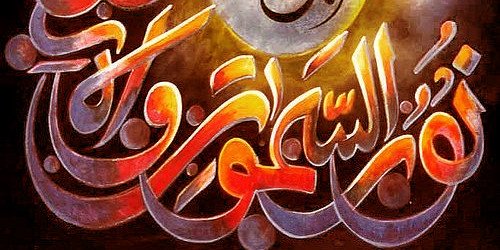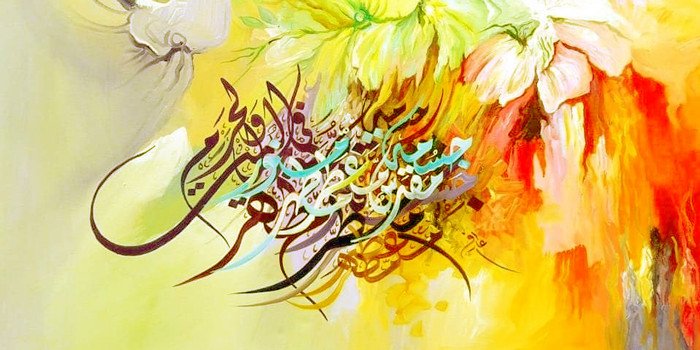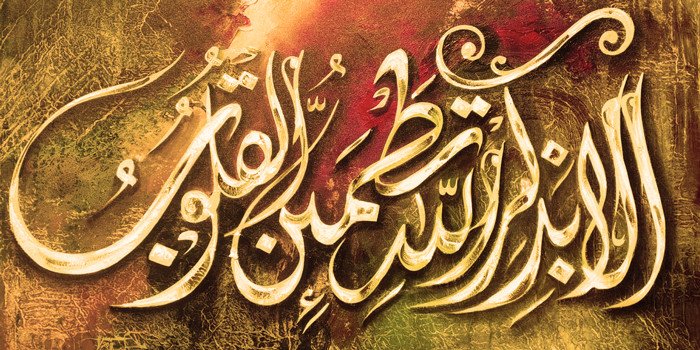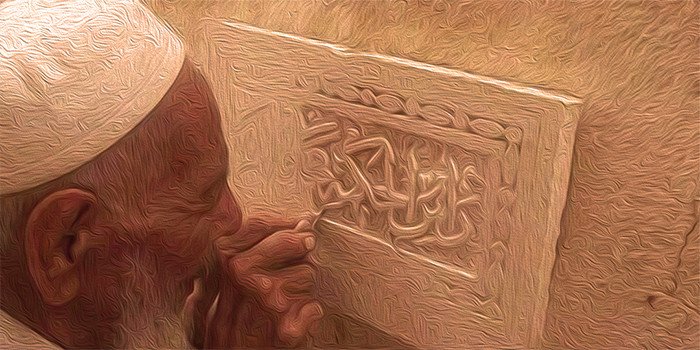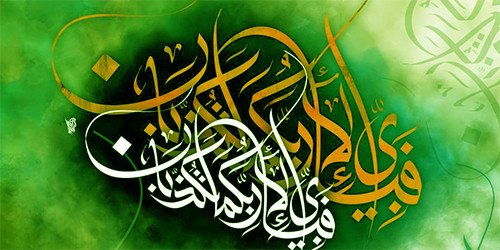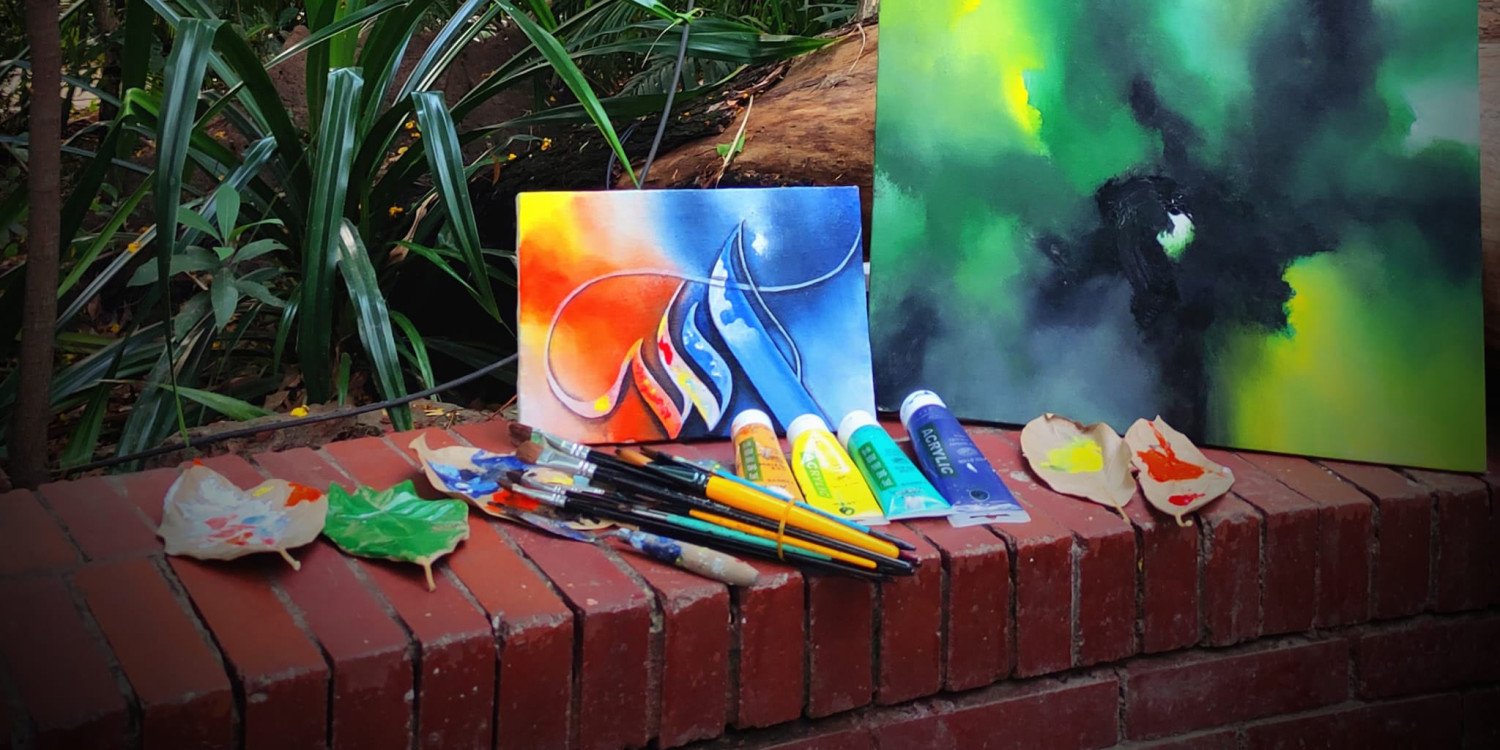Symbolism in Arabic Calligraphy: The Hidden Meaning Behind the Art of the Divine Word

Introduction: The Sacred Script Beyond the Surface
Arabic calligraphy is much more than decorative script—it is a sacred and spiritual expression, a visual embodiment of divine revelation and cosmic order. Unlike other art forms, where the emphasis may be on likeness or scenery, Arabic calligraphy is rich with symbolism, spirituality, and metaphysical meaning.
From the earliest Kufic inscriptions on the walls of mosques to contemporary calligraphic art found in galleries around the world, every curve, line, and stroke in Arabic calligraphy holds a deeper significance. This blog delves into the layered symbolism of Arabic calligraphy—its visual meanings, religious context, and emotional power that has transcended centuries.
1. The Divine Word: Quran as the Root of Symbolism
At the heart of Arabic calligraphy lies the Quran, believed by Muslims to be the literal word of God revealed to Prophet Muhammad (PBUH). Because of its sacred nature, the written Arabic script became a vessel for divine expression, shaping Islamic art into a unique, non-figurative form centered on script.
Why Arabic Script is Sacred:
-
Language of the Quran: Considered untranslatable in essence, the Arabic form is revered.
-
Divine Communication: Calligraphy becomes an act of preserving and honoring God’s word.
-
Visual Dhikr (Remembrance): Writing Quranic verses is seen as an act of spiritual devotion.
Thus, symbolism in Arabic calligraphy begins with the very letters themselves, believed to carry spiritual power and divine connection.
2. Letters as Symbols: Mysticism in the Arabic Alphabet
In Islamic mysticism—particularly Sufism—individual Arabic letters are often seen as cosmic symbols with spiritual meanings.
Examples of Symbolic Letters:
-
Alif (ا): A vertical stroke representing the oneness and unity of God (Tawhid). Often the first letter of “Allah” and many sacred words.
-
Lam (ل) and Ha (ه): When combined with Alif in “Allah” (الله), the letters create a symmetrical and balanced structure symbolizing divine harmony.
-
Ba (ب): Considered the foundation of creation in some Sufi philosophies, as the Quran begins with the letter Ba (in “Bismillah”).
Each letter’s shape, direction, and connection to others is seen not only as aesthetic, but as an encoded metaphysical language.
3. Symbolism in Calligraphy Styles and Scripts
Arabic calligraphy evolved into many different scripts—each with its own symbolic resonance, historical purpose, and artistic flavor.
Kufic Script (Angular & Bold):
-
Used in early Qurans and architecture.
-
Symbolizes stability, power, and divine permanence.
-
The square-like form reflects the eternal truth of God's word.
Thuluth Script (Elegant & Flowing):
-
Known for its dramatic curves and long verticals.
-
Represents divine beauty (Jamal) and grace.
-
Often used in mosque inscriptions and large-scale compositions.
Naskh Script (Readable & Harmonious):
-
Developed for writing the Quran in everyday use.
-
Symbolizes clarity, knowledge, and communication.
Diwani & Tughra (Royal & Ornate):
-
Used in Ottoman courts.
-
Symbolize power, order, and sovereignty, reflecting divine governance on earth.
Each script tells a story—not only of style but of spiritual and societal significance.
4. Geometry, Balance, and Sacred Symmetry
Islamic art is famous for its geometric precision and symmetry—traits deeply embedded in Arabic calligraphy.
Geometric Symbolism in Calligraphy:
-
Circular compositions (e.g., the names of Allah in circles) represent eternity and divine unity.
-
Symmetrical designs reflect balance and justice, qualities of divine order in Islam.
-
Spirals and endless knots symbolize infinity and the eternal nature of God.
Master calligraphers often incorporate sacred geometry into their layouts, aligning text in grids or spirals to visually echo the perfection of divine creation.
5. The Names of Allah: Divine Attributes in Visual Form
One of the most widely explored themes in Arabic calligraphy is the 99 Names of Allah (Asmaul Husna). Each name reflects a divine attribute such as:
-
Ar-Rahman (The Most Merciful): Often written in soft, flowing scripts to evoke compassion.
-
Al-Malik (The King): Rendered in bold, regal compositions.
-
Al-Basir (The All-Seeing): Sometimes visualized with eye-like shapes in artistic layouts.
When artists write these names, they meditate on their meanings, embedding intention into form. Thus, calligraphy becomes a spiritual exercise as well as an artistic act.
6. Symbolism in Color and Materials
Although calligraphy is primarily visual in form, the choice of color and material also carries symbolic meaning in traditional Islamic art.
Color Symbolism:
-
Black: Authority, power, and clarity. Often used in Quranic calligraphy.
-
Gold: Divine light, nobility, and sacred presence. Common in illuminated manuscripts.
-
Blue: Spirituality and depth. Often used in mosque tiles and Quran covers.
-
Green: The color of paradise and the Prophet Muhammad; symbolizes peace and renewal.
Materials Used:
-
Parchment or vellum: Used in early Qurans for durability and purity.
-
Papyrus and handmade paper: Indicate craftsmanship and reverence.
-
Gold leaf: Used to emphasize divine verses and highlight God’s names.
The careful selection of these elements transforms each piece into a tangible expression of the intangible.
7. Calligraphic Composition as Spiritual Journey
Many compositions are not just visual arrangements—they represent a path, a journey, or a reflection of the soul.
Common Symbolic Layouts:
-
Vertical compositions: Point toward the heavens, symbolizing divine ascent.
-
Horizontal compositions: Reflect the earth and human experience.
-
Circular and radial designs: Indicate wholeness, cosmic cycles, and the infinite nature of God.
Calligraphy thus becomes a map of spiritual exploration, guiding the viewer toward contemplation.
8. Sufi and Philosophical Interpretations
In Sufi traditions, calligraphy plays a mystical role in conveying truths that go beyond verbal language.
Examples:
-
The word "Hu" (هو), meaning “He” (God), is often used alone to invoke direct awareness of divine presence.
-
The word "Iqra" (اقْرَأ), the first revelation, means “Read”—seen as a command to seek inner and outer knowledge.
These spiritual interpretations turn Arabic calligraphy into a bridge between the visible and the unseen, inviting inner reflection and divine connection.
9. Contemporary Symbolism in Arabic Calligraphy
Today’s artists use Arabic calligraphy not only to preserve tradition but also to comment on modern life.
Modern Symbolism:
-
Political resistance: Calligraphy used in protest art to reclaim identity.
-
Cultural fusion: Merging Arabic calligraphy with Latin scripts or graffiti to symbolize global unity.
-
Digital reinterpretations: Artists use software to manipulate script, creating new symbols for a digital age.
Even in contemporary settings, symbolism remains at the heart of Arabic calligraphy, keeping the tradition alive and relevant.
Conclusion: More Than Words—A Visual Language of Spirit
Arabic calligraphy is not simply an art of writing—it is a profound language of the soul, communicating spirituality, divine truths, and cosmic principles through its symbolic form. Each letter is a gesture of devotion, each word a vessel of meaning, and each composition a doorway to deeper understanding.
In a world increasingly driven by visuals and speed, Arabic calligraphy invites us to slow down, observe, and contemplate—to see not just the beauty of form, but the truths it holds within.

